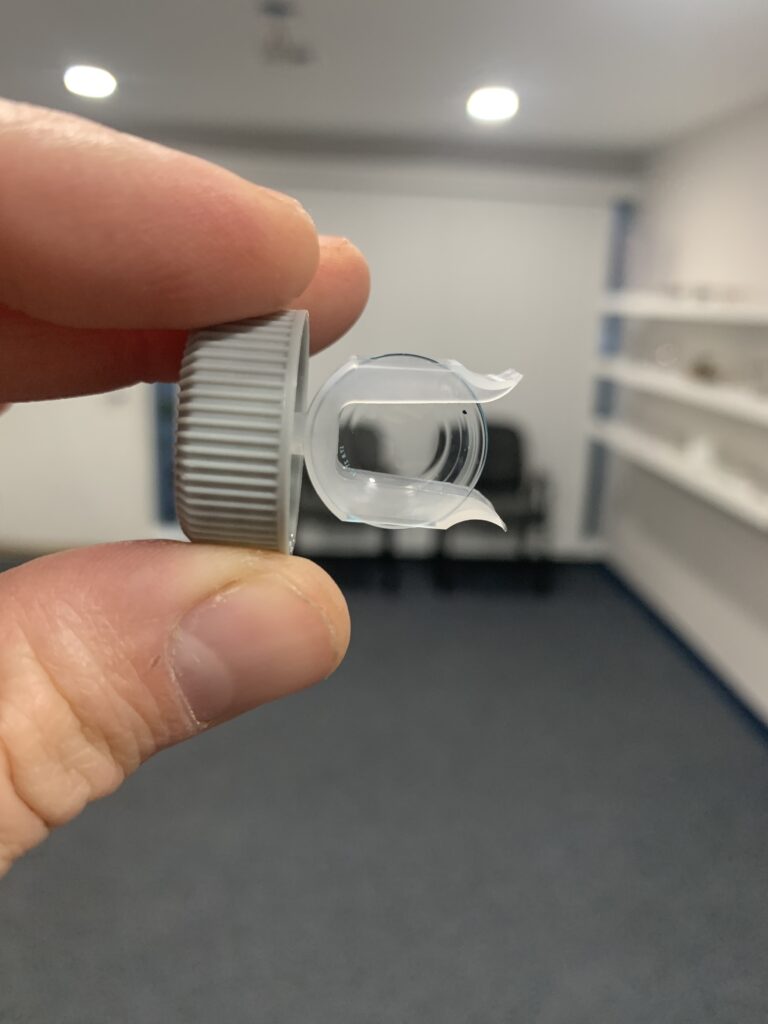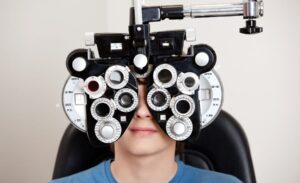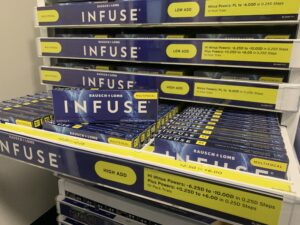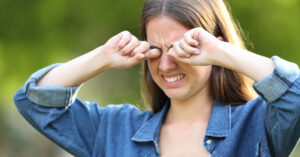Post-Surgery Ectasia in Michigan
What is Post-Surgery Ectasia?
Ectasia is a medical term that refers to the dilation or widening of a tubular structure in the body, such as a blood vessel or duct. In the context of surgery, ectasia may refer to the widening of a blood vessel or duct that has occurred as a result of surgical intervention. It is important for surgeons to be aware of the potential for ectasia and to take steps to prevent or manage it during surgery. In some cases, ectasia may be a desired outcome of surgery, such as when it is used to treat certain medical conditions. In other cases, ectasia may be an unintended complication that requires additional treatment.
Post-surgery ectasia is a condition in which the cornea (the clear outer layer of the eye) becomes thin and bulges outward after surgery. PRK can be effective at improving vision for many people, they are not perfect and do not work for everyone. Some people may still need to wear eyeglasses or contact lenses after these procedures to achieve optimal vision. In some cases, the vision may not be as clear as it was with eyeglasses or contact lenses before the procedure. There is also a risk of complications, such as dry eye, glare, halos, and starbursts around lights at night, which may affect vision and may require additional treatment.This can cause vision problems and may require further treatment. Risk factors for developing post-surgery ectasia also includes thin corneas, previous eye surgery, and certain medical conditions such as keratoconus or Ehlers-Danlos syndrome. It is important to follow up with your ophthalmologist after any eye surgery to monitor for complications such as post-surgery ectasia.

Treating Post-Surgical Ectasia
Treatment options for post-surgical ectasia may include:
- Glasses or contact lenses: Your doctor may recommend that you wear glasses or contact lenses to help correct your vision.
- Corneal implants: If your cornea has become too thin or irregularly shaped, your doctor may recommend a corneal implant to help improve your vision.
- Corneal cross-linking: This procedure involves using ultraviolet light and a photosensitizing agent to strengthen the collagen fibers in your cornea.
- Corneal transplant: In severe cases of post-surgical ectasia, a corneal transplant may be necessary to restore vision. This procedure involves replacing the damaged cornea with a healthy donor cornea.
There is some evidence to suggest that scleral lenses can be effective in treating post-surgical ectasia, particularly if the condition is caught early and the cornea is not severely damaged. scleral lenses are a type of contact lens that are larger than regular contact lenses and are designed to rest on the white part of the eye (the sclera). They are made of a rigid, gas permeable material that allows oxygen to reach the eye and helps to stabilize the cornea.
Scleral lenses can help to improve vision in people with post-surgical ectasia by providing a stable, uniform refractive surface for light to pass through and by protecting the cornea from further damage. In some cases, scleral lenses may be used in conjunction with other treatments, such as corneal cross-linking or corneal implants, to achieve the best possible vision results.

How Scleral Lenses Can Help
After a laser refractive surgery like PRK, it can be more challenging and time-consuming to fit contact lenses because the shape of the cornea has been altered. Scleral lens designs may be needed in these cases. Scleral lenses are often a good choice for non-surgical vision correction after PRK because they cover the entire cornea and can effectively correct corneal aberration and irregular astigmatism. These lenses are also helpful in treating ectasia symptoms that may occur after surgery.
The process for fitting scleral lenses is complex. Obtaining accurate measurements of the post-surgery cornea using specialized computerized instruments such as corneal topographers is an important part of the process of fitting scleral lenses. These measurements allow a contact lens specialist to achieve the best fit and vision correction possible. Because of the complexities involved, contact lens fittings after refractive surgery may be more time-consuming and costly than regular fittings, and may require several modifications to achieve the optimal fit, comfort, and visual acuity. It may also take longer to adapt to scleral lenses, which may need to be worn at least part-time every day for several days before they feel comfortable.
Fitting scleral lenses can be a complex process that requires specialized training and expertise. At Michigan Contact Lens, our goal is to provide our patients with the highest quality care and the best vision possible. If you are interested scleral lenses, our team of experienced eye care professionals will work with you to ensure that you receive the optimal fit and vision results.
Your Scleral Fitting Exam
Here’s what you can expect when fitting scleral lenses with us:
- Comprehensive eye examination: Our team will start by performing a thorough eye examination to assess your vision, the health of your eyes, and the shape of your cornea. We will use advanced testing equipment and techniques to gather the necessary information for a successful lens fitting.
- Selection of lens type and material: Based on the results of your eye examination, our team will determine the best type of scleral lens for your needs. We will consider factors such as your vision requirements, the shape of your cornea, and any other factors that may affect lens fit. We will also select the most appropriate lens material based on its oxygen permeability, durability, and other properties.
- Lens fitting: Once we have selected the right scleral lenses for you, our team will fit the lenses to your eyes. This process involves placing the lenses on your eyes and making any necessary adjustments to ensure a comfortable and stable fit. We may use a device called a lensometer to measure the power and curve of the lenses and make any necessary adjustments.
- Follow-up visits: After the initial fitting, you will need to return for follow-up visits to ensure that the lenses are fitting properly and that your vision is stable. Our team may make additional adjustments to the lenses as needed.
At Michigan Contact Lens, we are committed to providing our patients with the best possible care and vision results. If you are interested in scleral lenses, we would be happy to discuss your options with you and help you determine if they are the right choice for you.

Hybrid Lenses
Hybrid contact lenses are a type of contact lens that combines the best features of both hard (rigid gas permeable) and soft contact lenses. These lenses have a hard center that helps to correct vision, surrounded by a soft, flexible outer skirt that helps to provide comfort. Hybrid contact lenses can be a good option for people who have trouble wearing traditional hard or soft contact lenses. They may be especially helpful for people with irregular corneas or who have had refractive surgery, as the hard center can help to correct vision in these cases. Like other contact lenses, hybrid lenses require proper fitting and care to ensure safe and comfortable use.
Corneal Collagen Crosslinking
Corneal Collagen Crosslinking (CXL) is another treatment option for patients with keratoconus or post-PRK ectasia. CXL is a minimally invasive in-office procedure that strengthens the cornea by creating strong bonds (crosslinks) between corneal collagen fibers, halting the progression of these conditions. Clinical studies have shown that CXL not only stops the progression of keratoconus but also flattens the cornea and may improve vision. In combination with scleral contact lenses, CXL and scleral lenses provide the best treatment for post-PRK ectasia and keratoconus, with scleral lenses helping to improve vision and CXL stabilizing the cornea. For more information on CXL, please contact us.
Contact Lenses for Post-Surgery Ectasia FAQs
Yes, contact lenses are often the primary mode of vision correction for individuals with Post-Surgery Ectasia. Specialty contact lenses, specifically designed for irregular corneas, can help improve visual acuity and minimize the distortions caused by ectatic corneas.
There are various types of contact lenses that can be used for Post-Surgery Ectasia, depending on the severity and individual needs. Some common options include soft toric lenses, rigid gas permeable (RGP) lenses, hybrid lenses, and scleral lenses. The choice of lens type will be determined by your eye care professional after a thorough examination.
Soft toric lenses are soft contact lenses with astigmatism correction. They are suitable for milder forms of Post-Surgery Ectasia where the irregularities of the cornea are not as pronounced. These lenses are comfortable and offer good vision for some individuals with ectatic corneas.
Scleral lenses are large-diameter lenses that vault over the entire cornea and rest on the sclera (the white part of the eye). These lenses create a tear-filled reservoir between the lens and the cornea, improving vision by bypassing the irregularities of the corneal surface. Scleral lenses are often considered the gold standard for managing advanced cases of Post-Surgery Ectasia, offering optimal visual acuity and comfort.
It is crucial to follow your eye care professional’s recommended schedule for contact lens fittings and check-ups. Initially, frequent visits may be necessary to ensure the proper fit and prescription of your contact lenses. Subsequently, regular follow-ups are essential to monitor the health of your eyes and make any necessary adjustments to your contact lens prescription or type.
While contact lenses are the most common and effective method for managing Post-Surgery Ectasia, there are alternative treatments available. These may include corneal collagen cross-linking (CXL), intrastromal corneal ring segments (ICRS), or, in severe cases, corneal transplant surgery. However, the suitability of these options will depend on the specifics of your condition, and it is important to consult with a qualified eye care professional to determine the best course of treatment for you.






